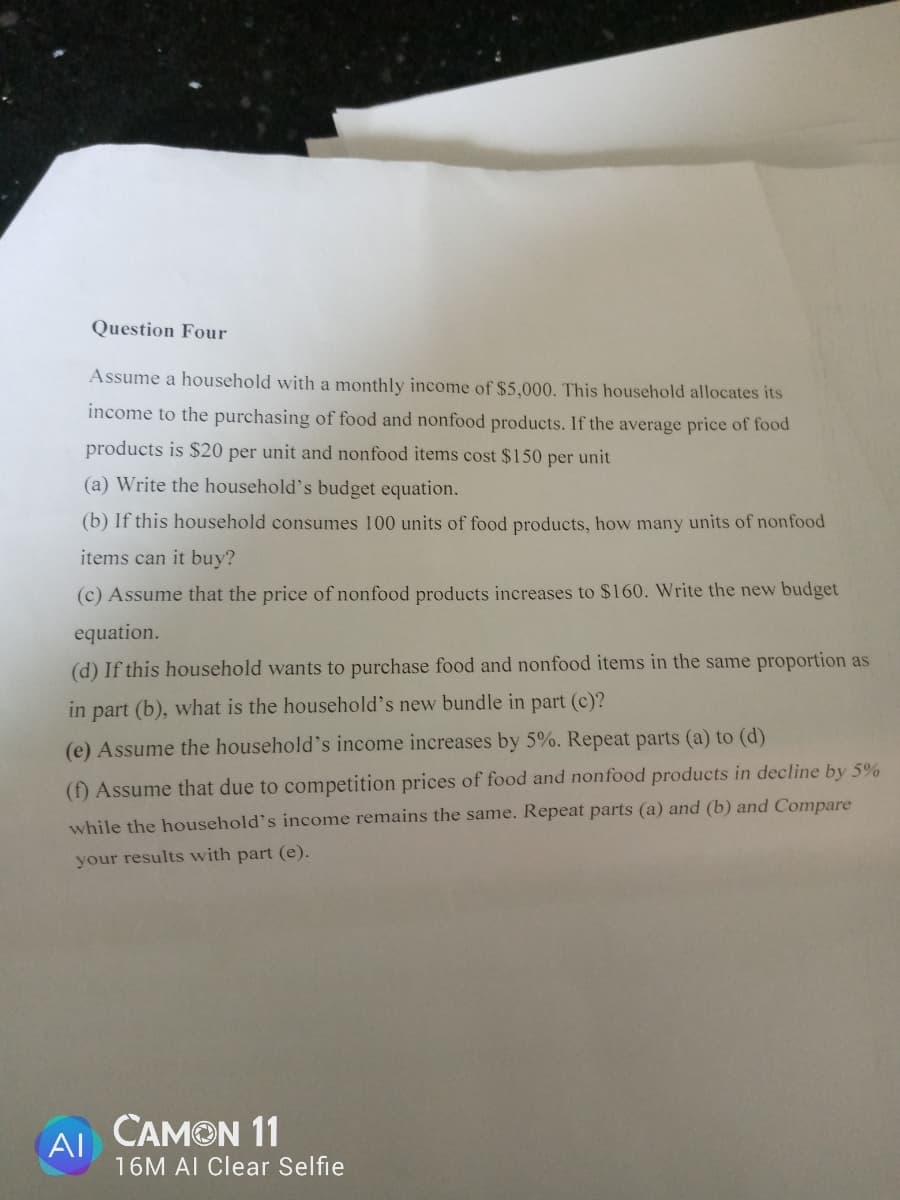Assume a household with a monthly income of $5,000. This household allocates its income to the purchasing of food and nonfood products. If the average price of food products is $20 per unit and nonfood items cost $150 per unit (a) Write the household's budget equation. (b) If this household consumes 100 units of food products, how many units of nonfood items can it buy? (c) Assume that the price of nonfood products increases to $160. Write the new budget equation.
Assume a household with a monthly income of $5,000. This household allocates its income to the purchasing of food and nonfood products. If the average price of food products is $20 per unit and nonfood items cost $150 per unit (a) Write the household's budget equation. (b) If this household consumes 100 units of food products, how many units of nonfood items can it buy? (c) Assume that the price of nonfood products increases to $160. Write the new budget equation.
Principles of Microeconomics
7th Edition
ISBN:9781305156050
Author:N. Gregory Mankiw
Publisher:N. Gregory Mankiw
Chapter21: The Theory Of Consumer Choice
Section: Chapter Questions
Problem 1PA
Related questions
Question

Transcribed Image Text:Question Four
Assume a household with a monthly income of $5,000. This household allocates its
income to the purchasing of food and nonfood products. If the average price of food
products is $20 per unit and nonfood items cost $150 per unit
(a) Write the household's budget equation.
(b) If this household consumes 100 units of food products, how many units of nonfood
items can it buy?
(c) Assume that the price of nonfood products increases to $160. Write the new budget
equation.
(d) If this household wants to purchase food and nonfood items in the same proportion as
in part (b), what is the household's new bundle in part (c)?
(e) Assume the household's income increases by 5%. Repeat parts (a) to (d)
(f) Assume that due to competition prices of food and nonfood products in decline by 5%
while the household's income remains the same. Repeat parts (a) and (b) and Compare
your results with part (e).
CAMON 11
AI
16M AI Clear Selfie
Expert Solution
This question has been solved!
Explore an expertly crafted, step-by-step solution for a thorough understanding of key concepts.
This is a popular solution!
Trending now
This is a popular solution!
Step by step
Solved in 3 steps

Knowledge Booster
Learn more about
Need a deep-dive on the concept behind this application? Look no further. Learn more about this topic, economics and related others by exploring similar questions and additional content below.Recommended textbooks for you

Principles of Microeconomics
Economics
ISBN:
9781305156050
Author:
N. Gregory Mankiw
Publisher:
Cengage Learning


Exploring Economics
Economics
ISBN:
9781544336329
Author:
Robert L. Sexton
Publisher:
SAGE Publications, Inc

Principles of Microeconomics
Economics
ISBN:
9781305156050
Author:
N. Gregory Mankiw
Publisher:
Cengage Learning


Exploring Economics
Economics
ISBN:
9781544336329
Author:
Robert L. Sexton
Publisher:
SAGE Publications, Inc


Economics: Private and Public Choice (MindTap Cou…
Economics
ISBN:
9781305506725
Author:
James D. Gwartney, Richard L. Stroup, Russell S. Sobel, David A. Macpherson
Publisher:
Cengage Learning

Microeconomics: Private and Public Choice (MindTa…
Economics
ISBN:
9781305506893
Author:
James D. Gwartney, Richard L. Stroup, Russell S. Sobel, David A. Macpherson
Publisher:
Cengage Learning